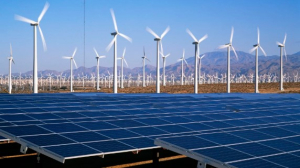Coal power expansion risks undermining climate goals, up electricity costs
Published on 21/02/2025 GMT+7 Reading time 3 minutes
A recent analysis by Global energy think tank EMBER highlights that Indonesia’s National Electricity General Plan (RUKN) could significantly increase coal-fired power generation, jeopardizing its low-emission targets and Just Energy Transition Partnership (JETP) commitments while also driving up electricity costs.
The plan includes adding 26.8 GW of new coal power plants over the next seven years, with more than 20 GW from captive coal power expansion.
The coal power expansion contradicts Indonesia’s pledge to phase out coal by 2040, as announced by President Prabowo Subianto at the G20 Summit last November. Instead of declining, coal-fired power generation is projected to grow by 62.7 percent, peaking in 2037.
This risks locking Indonesia into expensive, high-emission power generation, making it increasingly uncompetitive compared to renewable energy.
"Producing materials for green technology using high-emission energy is counterproductive. Indonesia should focus on reducing industrial emissions by adopting renewable energy to enhance sustainability and global competitiveness," Dody Setiawan, Senior Climate and Energy Analyst at EMBER, said as quoted in a statement on Thursday, February 20, 2025.
Katherine Hasan, Analyst at the Centre for Research on Energy and Clean Air (CREA), also raised concerns about the uncertainty in Indonesia’s power capacity planning, which threatens the country’s Vision 2045 goals.
She warned that Sulawesi and North Maluku, where much of the expansion is planned, will bear the heaviest economic and health burdens due to increased pollution and environmental degradation.
The EMBER report highlights that under current policies, new coal power plants will face financial and regulatory challenges:
• New coal plants can only operate until 2050 and must reduce emissions by
35 percent within 10 years.
• They will not benefit from domestic market obligation (DMO) pricing,
forcing operators to pay market rates for coal.
Furthermore, the cost of electricity from new captive coal plants is projected to reach US$7.71 cents/kWh, higher than PLN’s generation cost in 2020 (US$7.05 cents/kWh) and significantly more expensive than solar and wind projects, which range from US$5.5 to US$5.8 cents/kWh.
"Expanding captive coal power while the global market shifts to clean energy is a misguided decision. Indonesia has a major opportunity to scale up renewables as a more sustainable alternative," Dody cited.
Meanwhile, Katherine emphasized the need for a clear coal phase-out strategy while prioritizing renewables.
"Now is the time for Indonesia to ensure energy affordability and security as outlined in RUKN," she said.
The report calls for an urgent reassessment of the coal power expansion plan, stricter emission regulations, and accelerated renewable energy deployment. These steps are crucial to keeping Indonesia aligned with its climate commitments, reducing long-term energy costs, attracting clean energy investments, and ensuring the sustainability of its industrial sector.
Already have an account? Sign In
-
Start reading
Freemium
-
Monthly Subscription
30% OFF$26.03
$37.19/MonthCancel anytime
This offer is open to all new subscribers!
Subscribe now -
Yearly Subscription
33% OFF$228.13
$340.5/YearCancel anytime
This offer is open to all new subscribers!
Subscribe now






